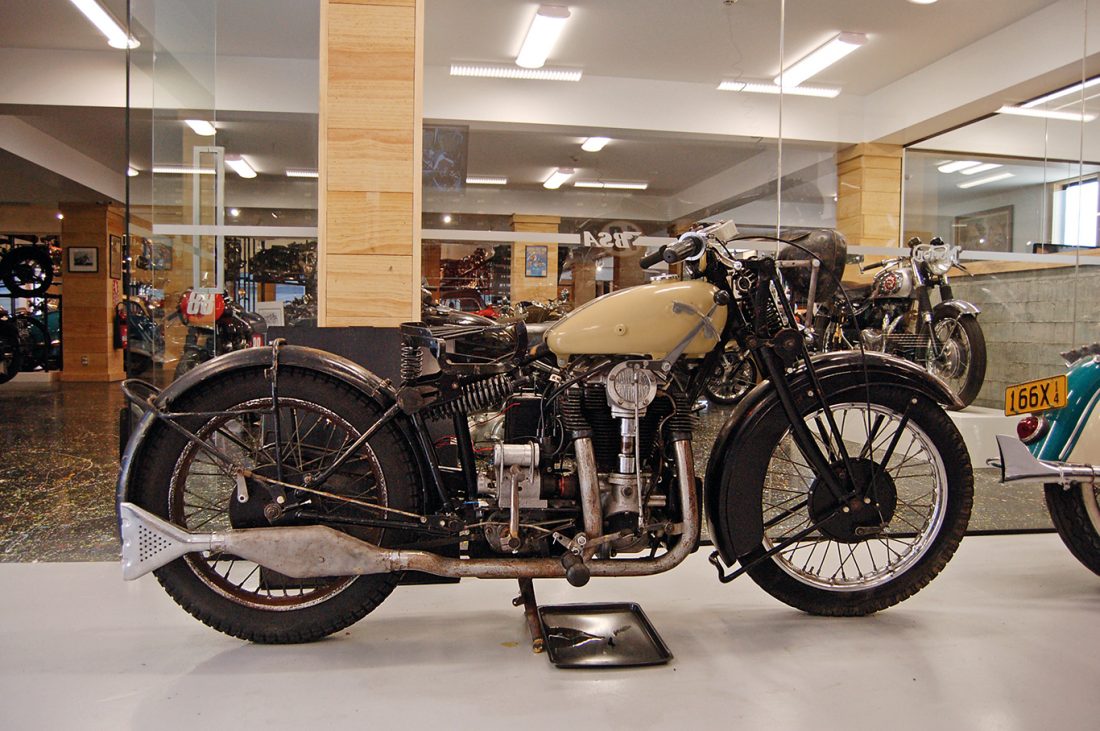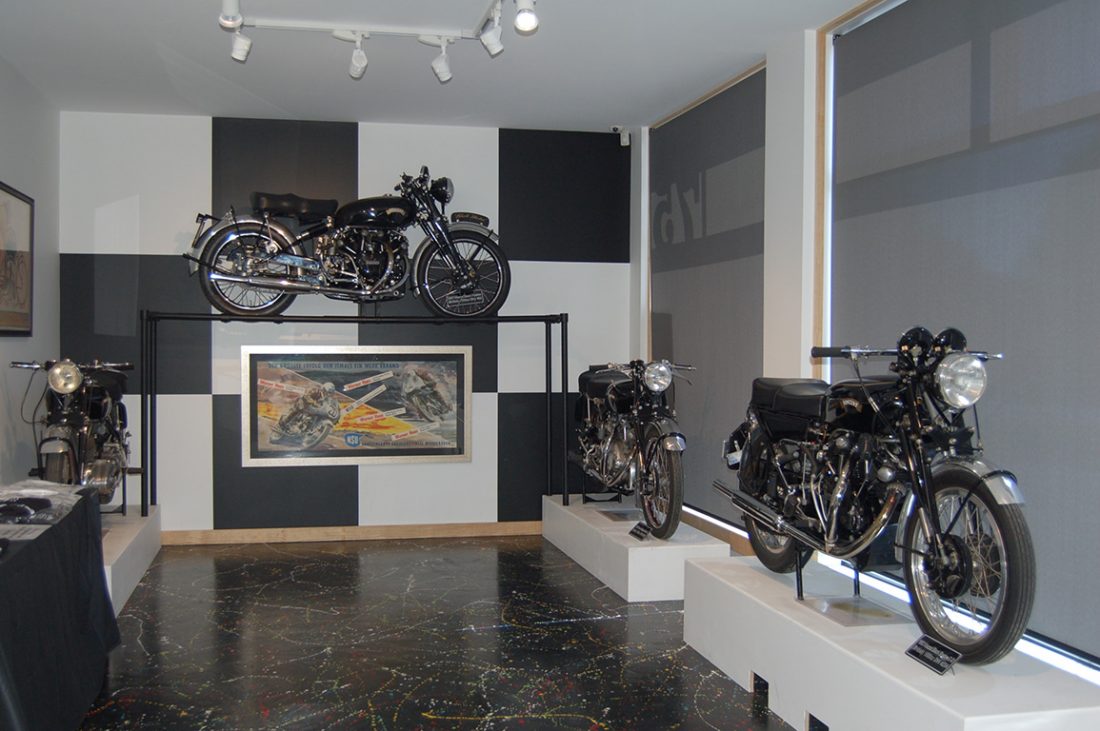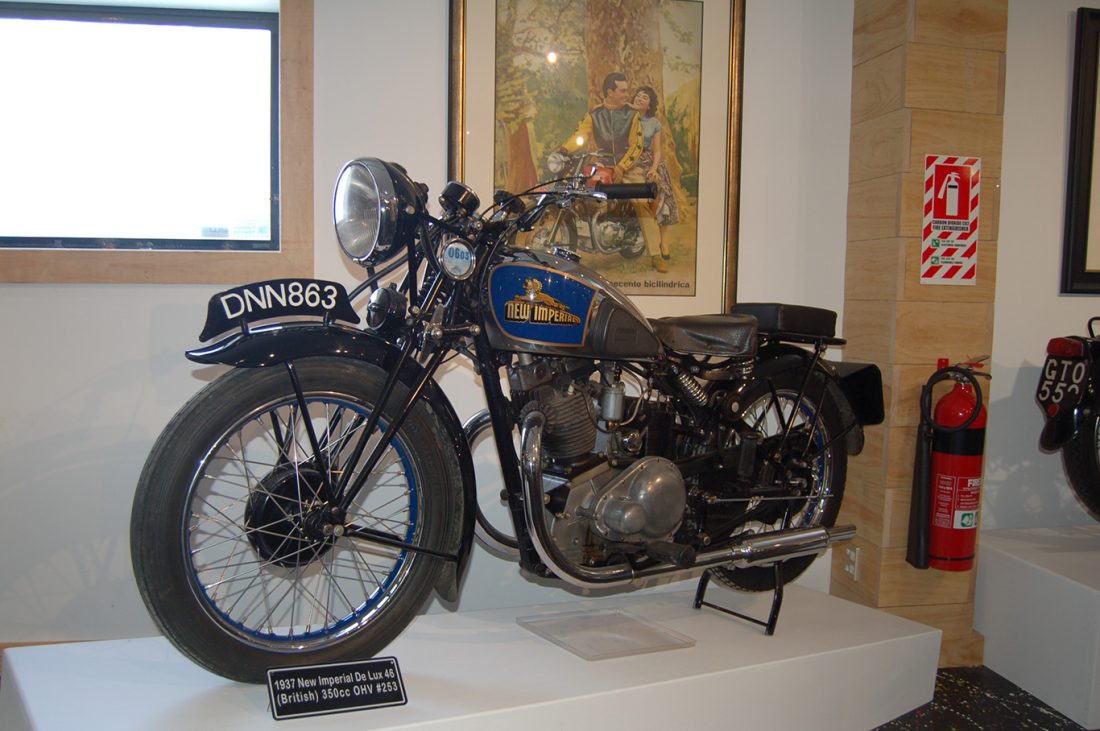Then and Now – Second-Hand Rose
We like to think we live in an enlightened era, with everything around us proof that we have forged on past the wildest dreams of generations before. Often we simply learn that they were pretty onto it back then…
Words and photos BRM
Have you ever scoffed at someone’s old bike, complete with twin shocks? That idea is so last generation… or is it? And is the single-shock design really the brainchild of the Boomers? It certainly wasn’t GenY that came up with it, but who did?
The short answer is that cantilever swingarms, single shocks and even single-sided swingarms were first invented before anyone had even heard of Baby-Boomers, let alone Generation X on the news. In fact TV didn’t even exist when such outlandish ideas were first used. It was first used when the term CAD meant a dodgy character with enough charm to keep out of trouble, rather than a design program on a computer.
American-built Flying Merkel competition machines with springs built into the seat tube, attached to a pivoting cantilevered swingarm, came about in late 1909 and were winning races regularly on a single-spring design in 1910. German brand NSU were producing motorcycles with a single shock design as early as 1909 too. By 1910 there were motorcycles built in Continental Europe, USA and England, all using a single shock and triangulated swingarm, as in cantilevered suspension – was it a case of industrial espionage or great minds thinking alike at the same time? The new trend of twin shocks somehow got the upper hand and, although the cantilevered single and dual shock made cameo appearances throughout, most notably the HRD Vincent in the 1950s, it wasn’t until the mid 1980s that it really came back with a vengeance. Of the well known brands today, Yamaha were the pioneers of that revival, notably in the motocross scene (after Suzuki turned down the technology), before the road world also went ‘Monoshock’ or Pro-Link, Unitrak, Full-Floater, to name a few of the names manufacturers came up with to describe their version.
Air suspension on motorcycles goes back even further, to 1906 but the seals of the day made them problematic and short-lived in practise. Still, they were thinking along the right lines way back then… Use of air assistance came and went several times (as the air leaked slowly past the seals) until Suzuki relit the candle with the air-assisted forks on the GS1000 – the first production motorcycle of its era to have externally adjustable, air-assisted front suspension, the tyre-type valves in the tops hid beneath a cosmetic chrome cap. In its second year of manufacture, the GS also sported (in some markets) air shocks as well. They worked as well, or as poorly, depends on your view of the suspension of the day, as conventional coil springs. The advantage of being able to quickly adjust them saw many street bikes raided of theirs to fuel demand for the production racers, who were not allowed the luxury of aftermarket items, so fettled the ‘standard’ ones instead (surely not!). From there, they faded into the background again for a while but if you look closely at the latest motocrossers, they are, again, sporting air forks. More complex and effective, yes, but still slider forks with air damping. All-new bro’…

















